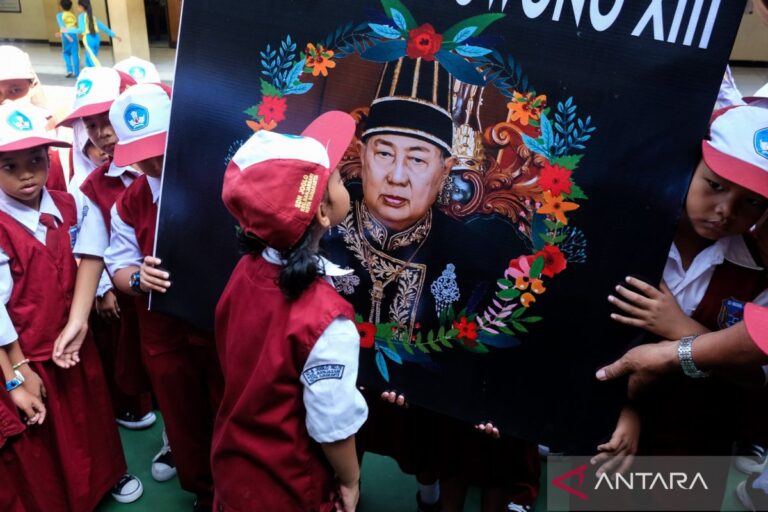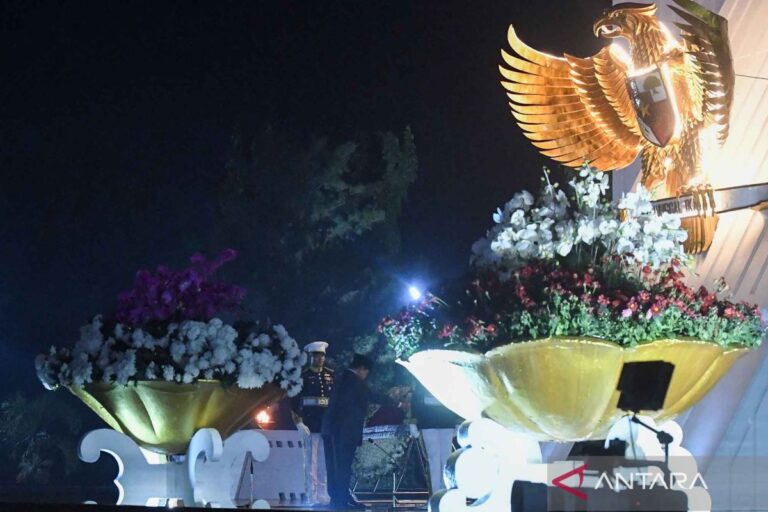
Jakarta (ANTARA) – For most people, death is a moment of pain for the loss of someone.
However, in Toraja, South Sulawesi, death is also a sacred event full of respect and cultural meaning through a traditional ceremony called Rambu Solo.
Rambu Solo is the highest tradition of respect for the dead, with the aim of introducing the soul into the afterlife, which the Toraja usually call “puya”.
Literally Rambu Solo means “rays pointing downwards”. This refers to the time the ceremony is held when the sun begins to set.
In the philosophy of the Toraja people, the moment when the sun sets symbolizes the end of life on earth and the beginning of the journey into the spirit world.
Torajans believe that someone who has died is not completely dead before the entire traditional Rambu Solo procession is performed.
While waiting for the ceremony, the body is considered immobile between the worlds of life and death, so the family will still be offered food, drink and a place to sleep.
For this reason, the grieving family has to hold a Rambu Solo ceremony at the expense of a lot of energy, time and money.
A series of Rambu Solo processions
The Rambu Solo ceremony is known as one of the most magnificent traditional traditions in Indonesia.
High costs are often the reason families put off implementation for months, even years, after the death of a family member.
In this procession the slaughter of buffaloes and pigs is a sacred part. These animals are not only a symbol of respect, but are believed to help spirits travel to the afterlife.
Therefore, the more animals are slaughtered, the faster the soul will reach the afterlife.
Besides that, the offering of sacrificial animals is divided into two, namely as a form of condolence (Pa’uaimata) and as a response to the gifts given in previous ceremonies (Tangkean Suru’).
Hence, Rambu Solo is divided into two series, namely the funeral procession (Rante) and the artistic performances, which take place simultaneously in a single event.
Typically, this ceremony lasts three to seven days, with the flagship event held from July to August.
The type of ceremony carried out can be different, depending on the social status of the deceased, namely:
1. Spoils ceremony: intended for the highest nobility (Tana’ Bulaan), involved from nine to hundreds of buffaloes and as many pigs as possible, and lasted for days.
2. Dibatang or Digoya Tedong Ceremony: For middle aristocrats (Tana’ Nassi) and high aristocrats who cannot afford it, they slaughter a buffalo every day.
3. Pasangbongi Ceremony: reserved mainly for common people (Tana’ Karurung), the procession usually lasts only one night.
4. Dasili’ Ceremony: for people of the lowest castes or for children who have not yet started teething.
Rambu Solo was built in a large field in the center of the Tongkonan traditional residential complex. This place also symbolizes unity and respect.
In general, bSome stages in the implementation of the Rambu S traditionholo among others:
1. Ma’tuda Mebalun: The process of wrapping the body in a shroud.
2. Ma’Rato: Decorate the coffin with gold and silver threads on the outside.
3. Ma’Papengkalo Alang: Lowering of the body into the stable for burial.
4. Ma’Palao or Ma’Pasonglo: Carrying the body to the burial place (Lakkian), with the belief that the higher the place where the body is enshrined, the faster the spirit will reach the afterlife.
5. Ma’Badong: Offerings of traditional dances and songs as an expression of mourning and respect.
6. Tedong Solok: Slaughter of a buffalo as a symbol of provision for the departed spirit puya.
Although there are differences in procedures in each traditional Toraja community, the meaning of the Rambu Solo tradition remains the same, that is, to deliver the spirits in a respectful and sacred manner.
This tradition has also become cultural heritage as a value of solidarity, respect and spirituality of the Toraja people.
In addition to being a cultural tradition, this ceremony also offers benefits to the world of tourism. Many tourists from inside and outside the country come to Toraja to see the procession firsthand.
Their presence also drives the regional economy, especially in the sectors of accommodation, transport, cuisine and souvenir sales.
Read also: By accepting traditional Toraja title, Forestry Minister pledges to complete forestry mandate
Read also: Rumah BUMN helps commercialize Toraja fabric
Read also: The Toraja striped buffalo is registered as common intellectual property
Reporter: Putri Atika Chairulia
Publisher: Alviansyah Pasaribu
Copyright © ANTARA 2025
Automatic retrieval of content, crawling or indexing by artificial intelligence on this website is strictly prohibited without written permission from ANTARA news agency.



